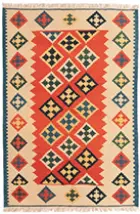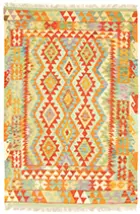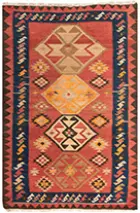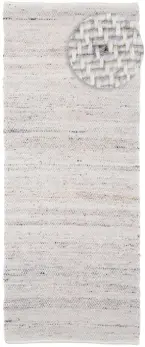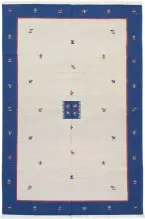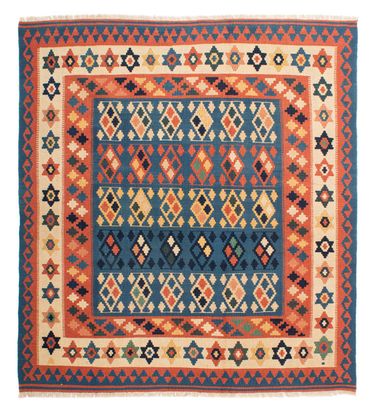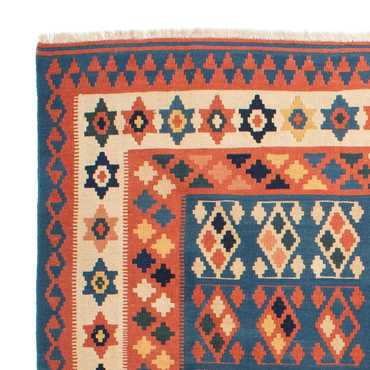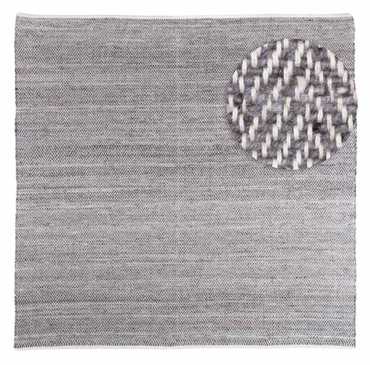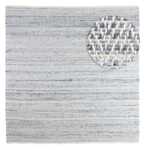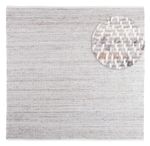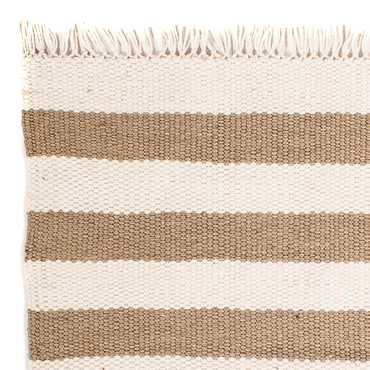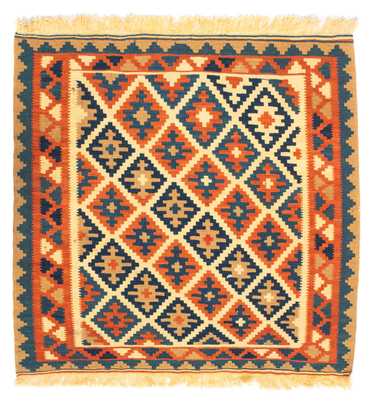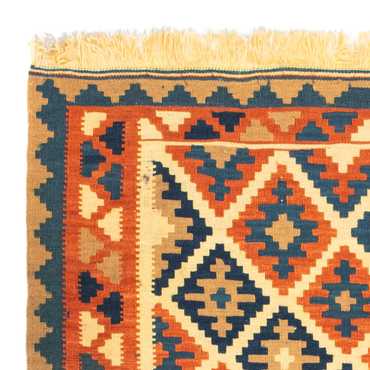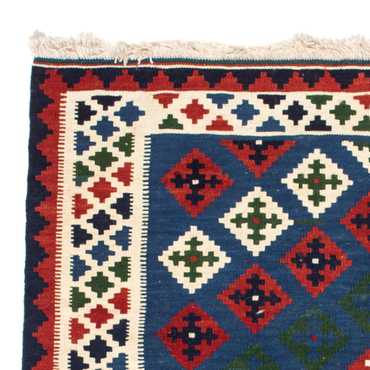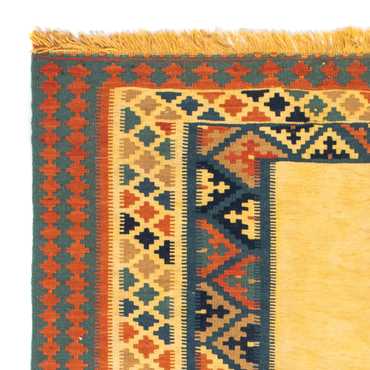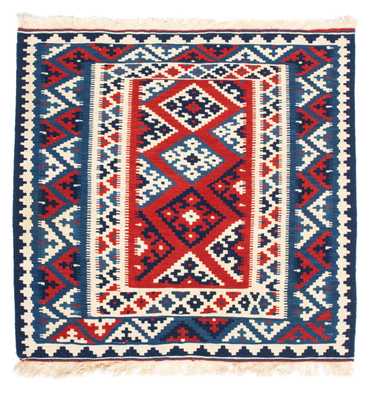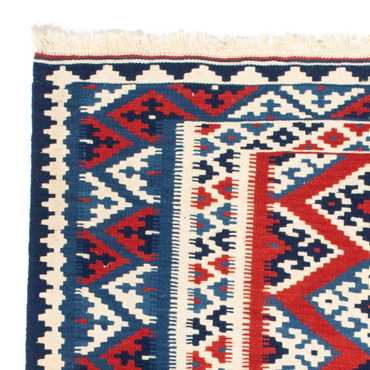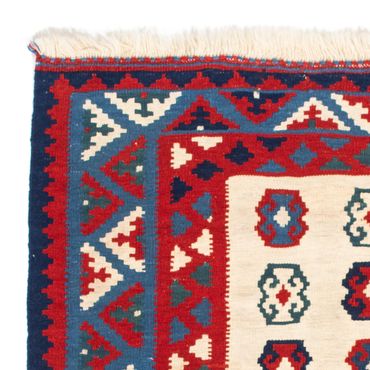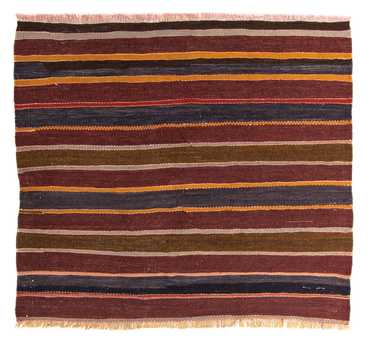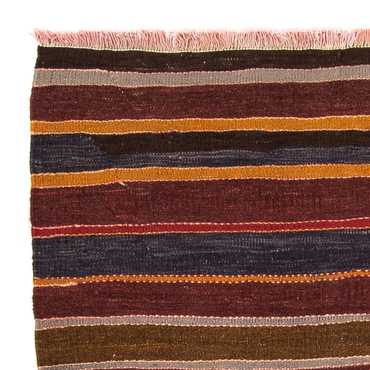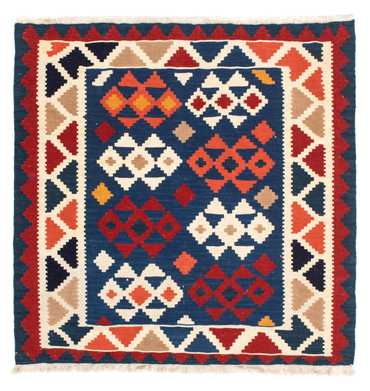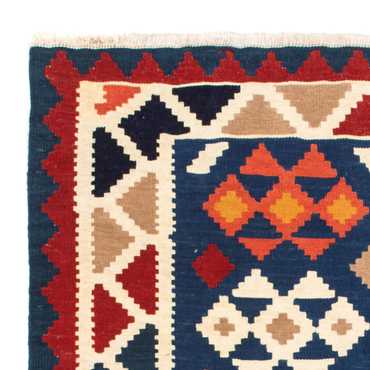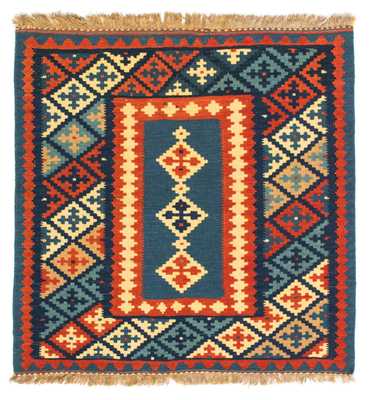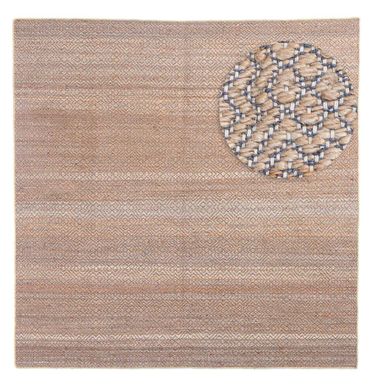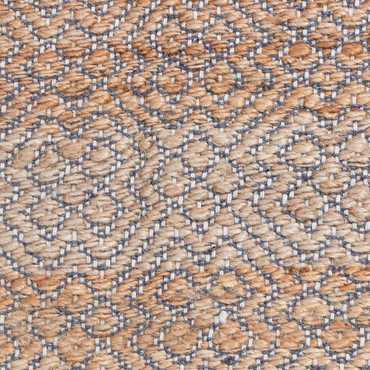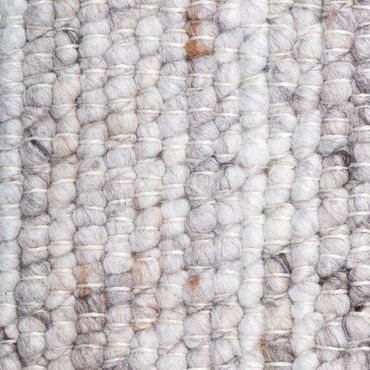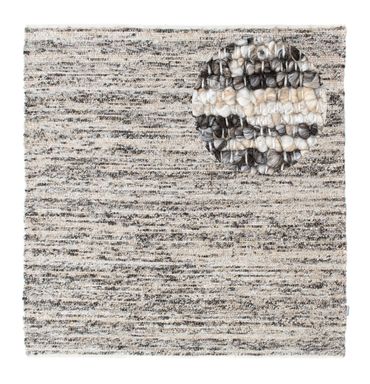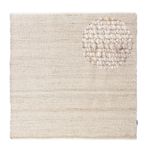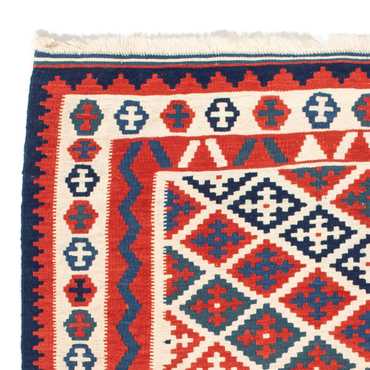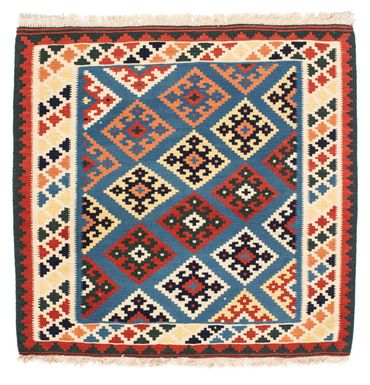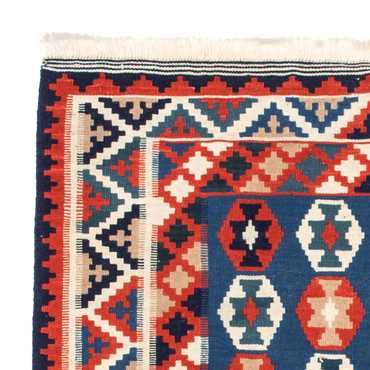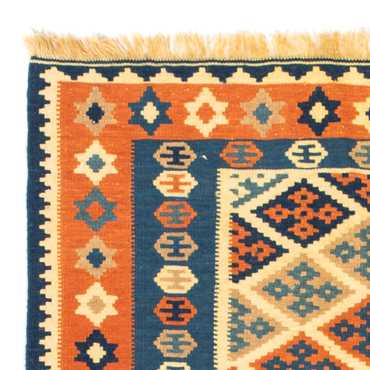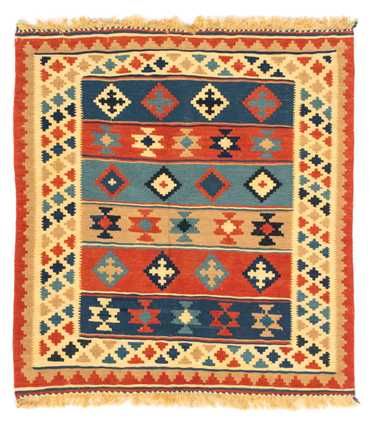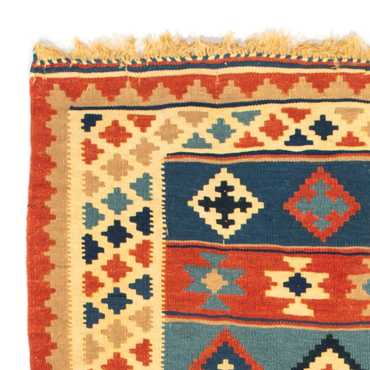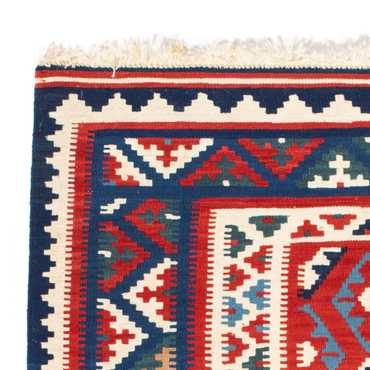- Kelim Rug - Trendy - Dream - square203 US$
393 US$ - Kelim Rug - Trendy - Dream - square203 US$
384 US$ - Kelim Rug - Trendy - Dream - square203 US$
368 US$
![Grey]()
![Light Blue]()
![Silver]()
-
- Kelim Rug - Trendy square -
68 x 6450 US$122 US$
-
- Kelim Rug - Oriental square -
103 x 100205 US$375 US$
-
- Kelim Rug - Oriental square -
107 x 100213 US$412 US$
-
- Kelim Rug - Old square -
155 x 135334 US$649 US$
-
- Kelim Rug - Old square -
135 x 115251 US$491 US$
-
- Sisal Rug - Cosmo - square110 US$
-
- Kelim Rug - Oriental square -
103 x 102209 US$417 US$
-
- Kelim Rug - Trendy square -
60 x 6047 US$109 US$
-
The Kilim Rug - Design, Work of Art, Handwoven History and Culture
Kilim rugs have developed from traditional nomadic weavings into an integral part of modern design. Originally from regions such as Iran, Turkey, and Central Asia, they embody a harmonious combination of centuries-old craftsmanship and timeless style. They are highly sought after for both classic and innovative interiors and, thanks to their unique visual and tactile properties, offer connoisseurs the appealing opportunity to enrich their lives with a touch of primeval sophistication.
Time travel – from the nomad's tent to the modern age
Kilims are not only characterized by their decorative effect but also by their versatile functionality. They were once used by nomads as tent hangings, blankets or seat mats, while today they can be found in trend-conscious households as rugs, wall hangings, or table runners in a wide range of shapes and sizes. Thanks to their practical properties, they can be used flexibly in different rooms, be it in the hallway, living room, or dining area. They lend elegance and Far Eastern spirit to any interior design style.
Robust perfection – time-honored production
The production process involves a time-honored weaving technique that dates back to one of the simplest and oldest methods. The “warp and weft” process, in which the warp thread forms the basic structure and the weft thread creates the actual fabric, gives the kilims their typical structure. This design clearly distinguishes them from other hand-knotted rugs and ensures their special durability. Each piece is the result of an elaborate handicraft and is, per se, one of a kind.
Geometry and Symbolism – A Kaleidoscope of Patterns and Colors
The motifs on a kilim are much more than mere decoration – they tell legends and often symbolize desires and emotions. Typical designs such as diamonds, zigzags, triangles, and many other details are deeply rooted in the culture of the nomads and reflect their values. They can symbolize protection, fertility, or luck, giving the rugs a deeper meaning. Despite their long journey, the geometric compositions appear surprisingly universal and fit seamlessly into a wide range of Western living styles.
The colors come from natural dyes extracted from plants and minerals. These pigments give the rugs their earthy and vibrant colors, ranging from intense reds and oranges to calm blues and browns. Modern Kilim rugs expand this color palette with soft creams, pastels, or bold contrasts that blend in perfectly without losing their authentic look.
Vintage or classic – a rug for every style
Whether as a new centerpiece in the living room, as a runner in the hallway, or as a cozy accent in the bedroom - a kilim blends harmoniously into any living environment. Thanks to its woven surface and diverse design, it is also suitable for high-traffic areas such as the entrance or kitchen. In the dining room, the rug's colorful yet soothing effect creates a warm, inviting atmosphere that works well almost anywhere.
A wealth of shapes – particularly kilims
At Morgenland, we always have a large selection of kilim formats in stock to meet the needs of every customer. From small runners that serve as accent pieces to large-format unique specimens for spacious living areas – the variety of kilims is impressive. Most of the rugs are rectangular, but due to their handmade nature, there are also numerous irregular and unique shapes that creatively enrich any room. This means that the right piece can be found for every situation, impressing with its individuality.
Hypoallergenic and sustainably woven
Kilims not only offer aesthetic variety but also numerous practical advantages. Thanks to their hypoallergenic properties, they are ideal for allergy sufferers, as they are made from high-quality materials of natural origin such as wool and cotton. They are also very easy to care for, as their flat texture means that less dirt and dust get stuck in them. In addition, Morgenland kilims are particularly durable and sustainable, making them a valuable addition to any home. The combination of craftsmanship and environmentally friendly production makes them a valued part of consciously ecological living concepts.
Easy care for lasting beauty
Taking care of a kilim is straightforward and saves time. Regular vacuuming is sufficient to prevent superficial soiling. For a more thorough cleaning, you can gently shake out the rug or have it professionally cleaned if necessary. To prevent slipping and at the same time extend the lifespan, the use of a non-slip underlay is recommended. It is important to act quickly if stains occur; mild detergents that are specifically suitable for natural fibers protect the material and preserve the colors.
Morgenland - ✓ high-quality materials ✓ free shipping
Our guiding star is our inexhaustible passion for extraordinary rugs. We offer you a diverse selection of handmade unique items that impress with first-class materials such as wool, individually designed patterns and the use of special techniques. Choose from a variety of patterns and colors to find your dream rug and perfectly round off your interior design in every room to give your design that certain something.
We also take sustainability seriously, both in the way we make our rugs and in our responsible use of resources. We strive to create products that are a good choice for those who want to combine responsibility and self-fulfillment.
Thanks to our securely packed delivery, you can look forward to your order straight away. Shipping and returns are free, and we will refund your purchase if you are not satisfied. We focus on variety. Our clear and conscientious processing ensures that you get exactly the item you want.
Stories and traditions – finesse and contemporary design
A kilim is much more than just a floor covering – it is an expression of centuries-old history and symbolic craftsmanship, passed down from generation to generation. Due to its unique weave and playful arrangements of shapes and proportions, it brings a nomadic touch par excellence to any location in an affordable way. A kilim is always a worthwhile investment in art and interior design, sustainability and individually designed flair. It is an effortless companion that traverses the ups and downs of life with a winking, life-affirming charm – an invitation to relive the past.
FAQ
What characterizes kilims?
Each handcrafted example is distinguished by its unique quality and attention to detail. They are made according to an old custom without the use of knots, which gives them a dense yet light weave. They are particularly robust and durable. Typical are the geometric patterns and symbolic motifs that originate from nomadic mythology.
How should a kilim be cared for?
The flat weave texture means that dust and dirt do not accumulate as much, making the rugs easy to care for. Regular vacuuming is usually sufficient. For stains, a mild detergent suitable for natural fibers should be used. An anti-slip underlay can prevent slipping and extend the lifespan.
Where do kilims come from?
They originated in regions such as Iran, Turkey, and Central Asia. They were made by nomads using traditional methods and served as tent hangings, blankets, or floor coverings. The hand-woven patterns often reflect the cultural and natural influences of the region in question.
Which rooms are they best suited to?
Thanks to their durability and decorative properties, you can quickly and easily accentuate your ambience with these extraordinary rugs. They are an excellent addition to the living or dining room, where they act as a visual eye-catcher. They also look particularly good in high-traffic areas such as hallways or entryways due to their robustness.
What materials are used?
Typically, a kilim is made of natural fibers such as wool or cotton. Wool is used particularly often because it is heat-insulating and durable. In some cases, goat hair is added to increase strength. The natural materials make them resilient and easy to care for.


